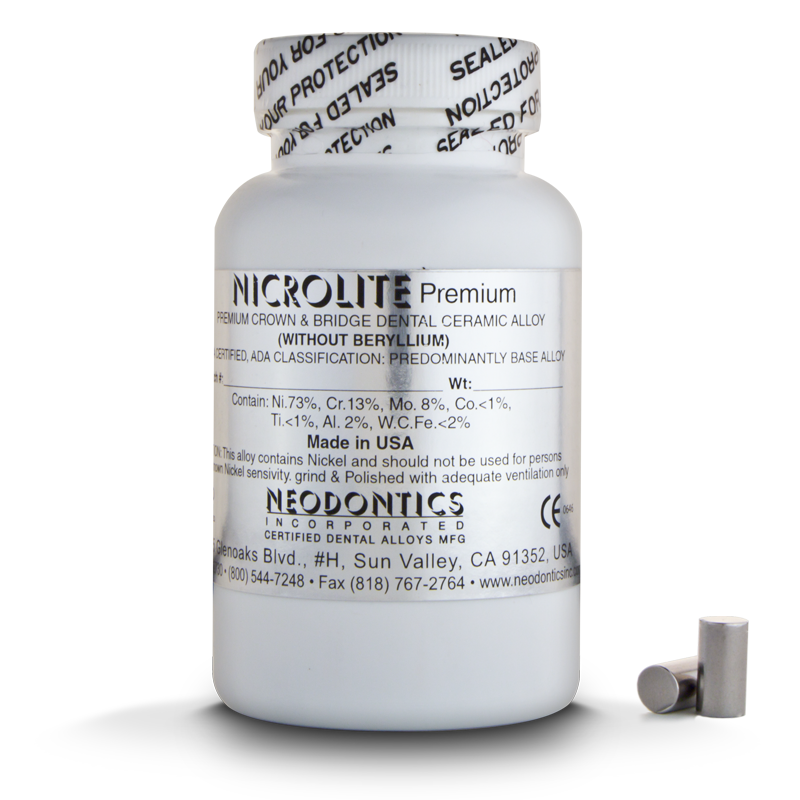
Nicrolite
Partial Denture Alloy
Index
MSDS
Instructions
Physical Data
| Melting Range | 1194°c-1276°C (2181°F-2329°F) | Casting Temp | 1243°C (2450°F) |
|---|---|---|---|
| Hardness | 340 HV | CTE | - |
| Yield Strength | 122,000 PSI | Tensile Strength | 135,000 PSI |
| Elongation | 7% | Density | 8.0 g/cm3 |
| Specific Gravity | 7.9 g/cm3 |
Section I
Material Identification
Nickel-Chromium AlloyMaterial Name
NicroliteSection II
Ingredients & Hazards
| Ingredients | Cas # | % Composition by weight |
|---|---|---|
| Nickel (Ni) | (7440-02-0) | 72-74% |
| Molybdenum (Mo) | (7439-98-7) | 8-9% |
| Chromium (Cr) | (7440-47-3) | 12-14% |
| Aluminum (Al) | (Cas 7429-90-5) | 2% |
| Cobalt (Co) | (7440-48-4) | <1% |
| Titanium (Ti) | (7440-32-6) | <1% |
Hazard Data
- For pure Molybdenum (Fumes & Dust)
- 8 hr. TLV-5mg/m³
- Pure Nickel & Chromium (Fumes & Dust)
- 8 hr. TLV- 1mg/m³
- Ceiling level-5mg/m³
- Max. for 30 Min.-25mg/m³
- Silicon (Si)
- 10mg/m³ (inhalable fraction) 6mg/m³ (alveolar fraction), Tasks/fields according to TRGS 900 Nr. 2.4 Abs. 8 and 9 3 mg/m ³ (alveolar fraction), other applications (common limit value for dusts) TRGS 900
Section III
Physical Data
| Melting Range | 2181º - 2329º F (1194 °-1276° C) |
| Appearance | A silver/platinum color |
| Specific gravity | 7.9 gm/cm³ |
| Solubility in water | None |
| Odorless |
Section IV
Fire & Explosion Data
These alloys are fire and explosion resistantSection V
Reactivity Data
At high temperatures, these alloys will oxidize, but are stable. At very high temperatures, these alloys may produce fumes.Section VI
Health Hazard Information
TLV (See Section II)These alloys contain Nickel, Chromium, Molybdenum, Aluminum, Beryllium (1.8% Max.), and traces of Cobalt. University studies have established that alloys in these categories are not only biocompatible, but clinically safe as well. The alloy in solid form is generally not considered hazardous. Grinding, melting, cutting or any other process that releases dust or fumes can produce hazardous levels and should be avoided.
First Aid
| Eye Contact | Flush eyes Thoroughly with running water, even under eyelid. |
| Skin Contact | Flush skin and scrub thoroughly with soap and water. |
| Inhalation | Remove person to fresh air. Assist breathing with additional oxygen if necessary. |
